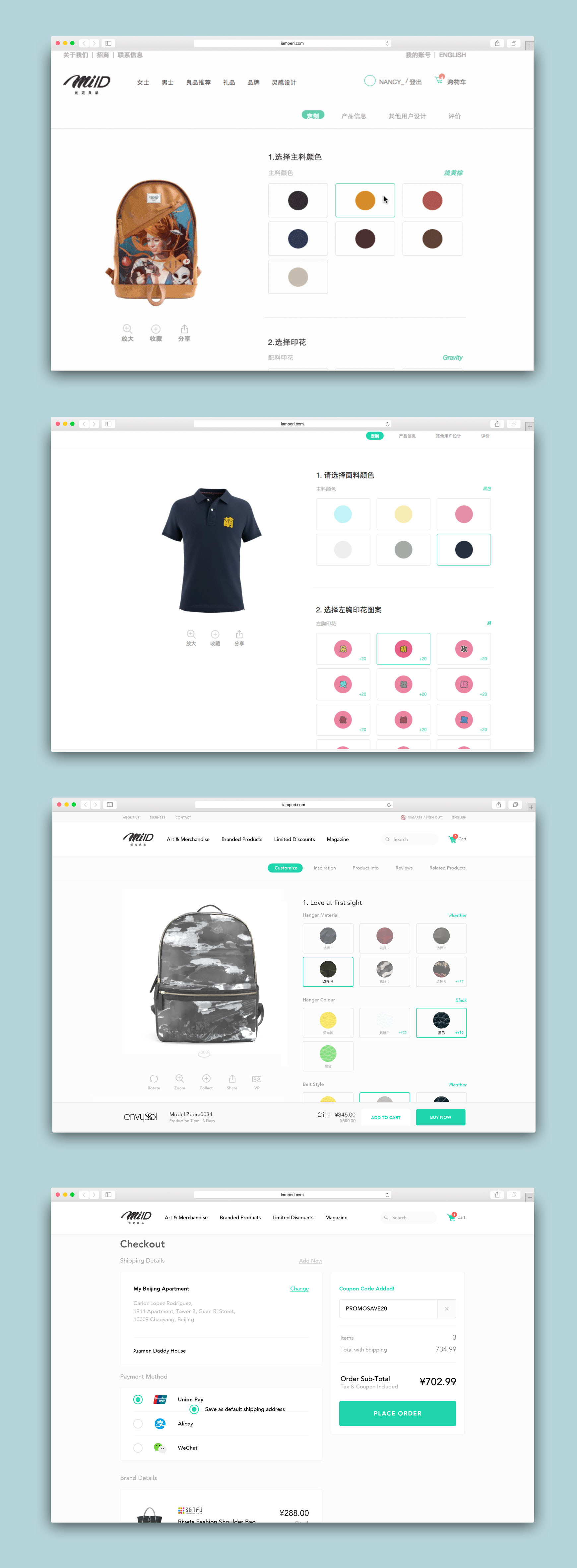UX/UI Design and Brand Experience for a VR-based Customization Platform
Miid.io is an innovative start-up offering a real-time 3D and VR-based e-commerce platform that allows users to customize and purchase a wide range of products. The platform was designed to cater to the growing demand for personalized items, delivering a seamless and immersive shopping experience in the Chinese market.
By 2015, the trend of product customization had become prominent, with brands like NikeID, New Balance, and MiAdidas offering personalized clothing and accessories. However, despite these innovations, customers still faced long delivery times and limited customization options. Miid.io aimed to revolutionize the customization process by offering faster delivery and a broader selection of products, all within an interactive VR environment. My task was to develop a user-centered design strategy that could support this vision while enhancing user engagement and brand experience.
So, at the end of 2015, I was hired to give shape to an idea focused on offers from a new platform where Chinese users could customize and buy a lot of brand products and the provider would build them and deliver within days.
We conducted extensive research into user behavior within the Chinese market, focusing on:
Due to the fact that customization options grew quickly, there was plenty of data available to us. We used this to accurately define their user base, the way these users behaved and several possible use cases for the app.
With common scenarios in place, we were able to define detailed personas using their vast data pool. The personas looked something like this:
Without a clear understanding of how easy customization of products can be, the demand is not as big. Our goal was to make sure Miid’s platform showcased how great it was to have your own unique product, how real the experience could be, and how easily it can be done.
We performed extensive user testing across three environments:
| Before shop exhibition | After shop exhibition | |
|---|---|---|
| Log in and Sign up | 4 | 5 |
| Discover customizable articles | 4 | 5 |
| Design your unique product | 2 | 5 |
| Create a new collection of items | 1 | 4 |
| Get discounts when you share | 2 | 4 |
One major challenge in the project was to focus on personalization. Our aim was to improve user engagement by understanding more about a user’s personal preferences, allowing us to predict and tailor relevant products for everyone's design preferences.

We created a promotional video highlighting the VR customization feature to give users a sense of what to expect. The video was a key tool in attracting attention to Miid’s innovative platform, showcasing the first-hand user experience of creating custom products in a virtual environment.
Most people make the mistake of thinking design is what it looks like. People think it’s this veneer – that the designers are handed this box and told “make it look good”. That’s not what we think design is. It’s not just what it looks like and feels like. Design is how it works. Steve Jobs, US computer engineer & industrialist.
The company's founders are exploring the clothing industry to improve customization service on the spot, via VR technologies. Design, User Experience and technology allowed the project to go to another level for customization in Asia
Are you working on something great? I would love to help make it happen! Drop me a
message and start your project right now! Just do it. I will not spam you
with
e-mail or add to MailChimp list.